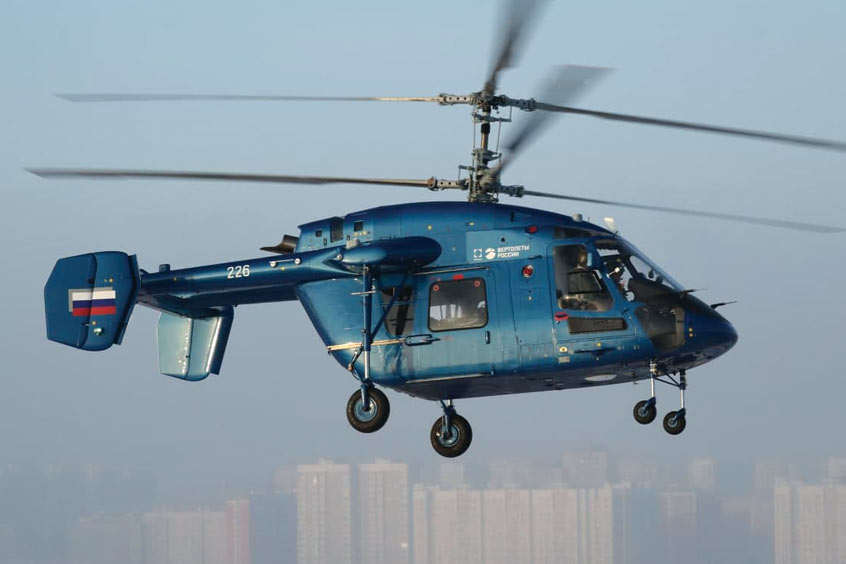
The latest variant of the Ka-226T light helicopter has made its first circular flight as part of its flight test programme at the National Helicopter Engineering Centre Mil and Kamov, a subsidiary of Russian Helicopters.
The helicopter was flown by a crew that consisted of senior test pilot first class Alexander Cherednichenko and test navigator first class Maxim Bespaly. The Ka-226T spent 12 minutes in the sky, flying in a circle at a speed of about 100 km/h at an altitude of up to 300m.
The upgraded helicopter was unveiled for the first time at the MAKS-2021 international aerospace show in July, while the overseas premiere took place at the Dubai Airshow 2021 in November. That same month, the Ka-226T Alpinist took to the air for the first time, making a hover flight.
“Flight tests of the modernised Ka-226T are continuing successfully, and the first circle flight is one of the most important milestones in the development of the updated rotorcraft, which will soon be available to Russian and foreign customers. The helicopter is maximally adapted to high altitude flights, which significantly expands its mission potentials and the range of tasks it can perform," says Russian Helicopters general director Nikolai Kolesov.
Due to its ability to fly at high altitude, the Ka-226T project has received the working name 'Climber'. It differs from previous models of the Ka-226 family with a new airframe and fuselage design that incorporates significantly increased aerodynamic characteristics. The body is made using modern lightweight materials. The carrying system of the machine has also been significantly updated; the Ka-226T has received a new main rotor column, blades and main gearbox, and a shock-resistant, accident-resistant fuel system has been installed that meets increased safety requirements.
Also, the helicopter is equipped with a new complex of flight-navigation and radio communication equipment, and it can be optionally equipped with oxygen equipment, ballonets, air conditioning and a heating system.
The Ka-226T has a coaxial rotor design, which provides good controllability in thin air, resistance to strong crosswinds, high climb rate and the ability to take off and land on high altitude sites. Also, it is highly effective when flying over water, and it can take off and land on the deck of even small sea vessels.
The machine has a low vibration level, ease and simplicity of control, the ability to take off and land on small sites even within urban infrastructure, high hover accuracy even when working with a load on an external sling, and passenger safety on landing when the propellers are working.